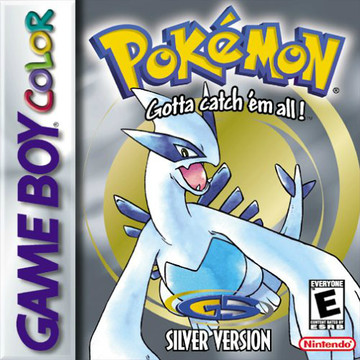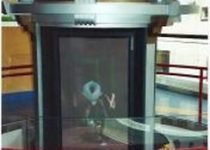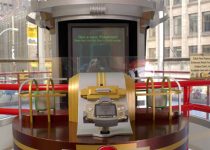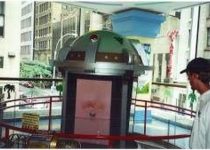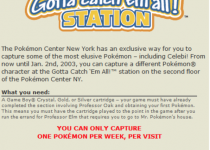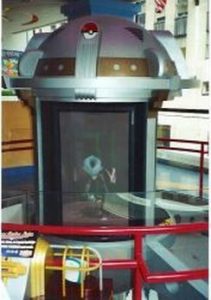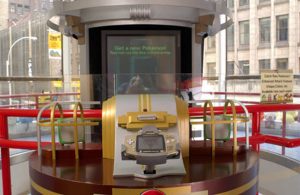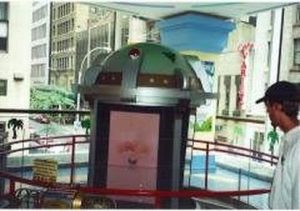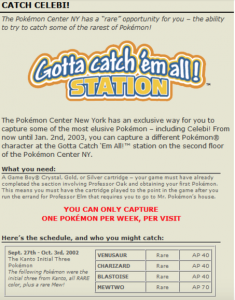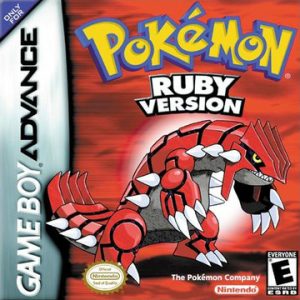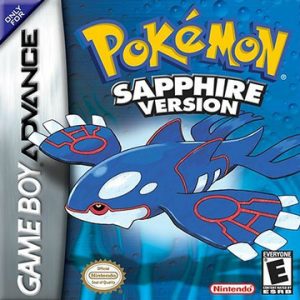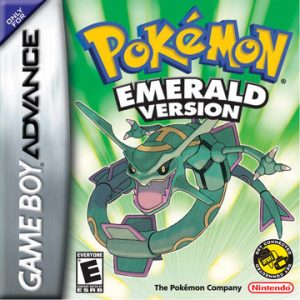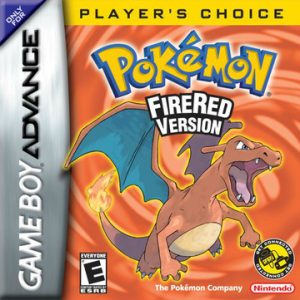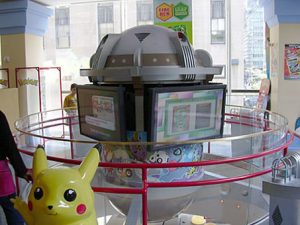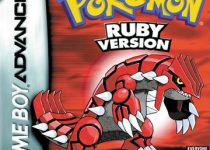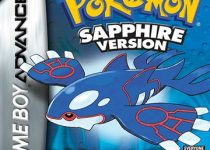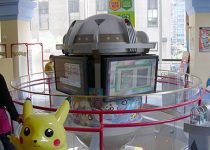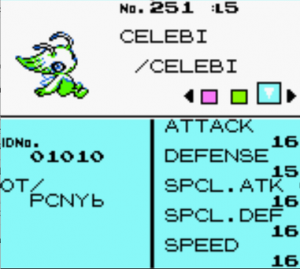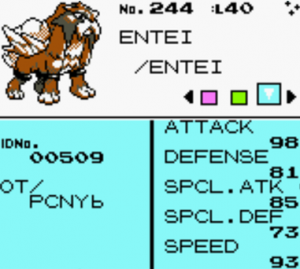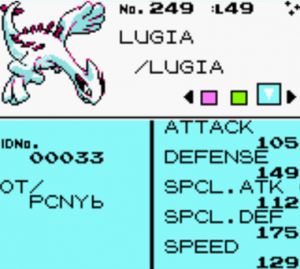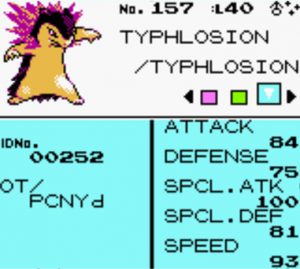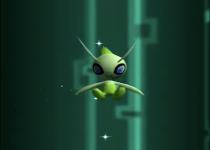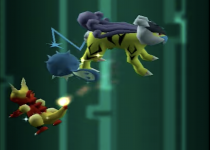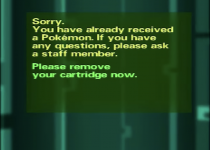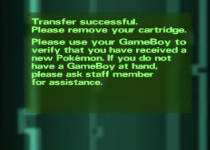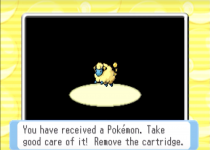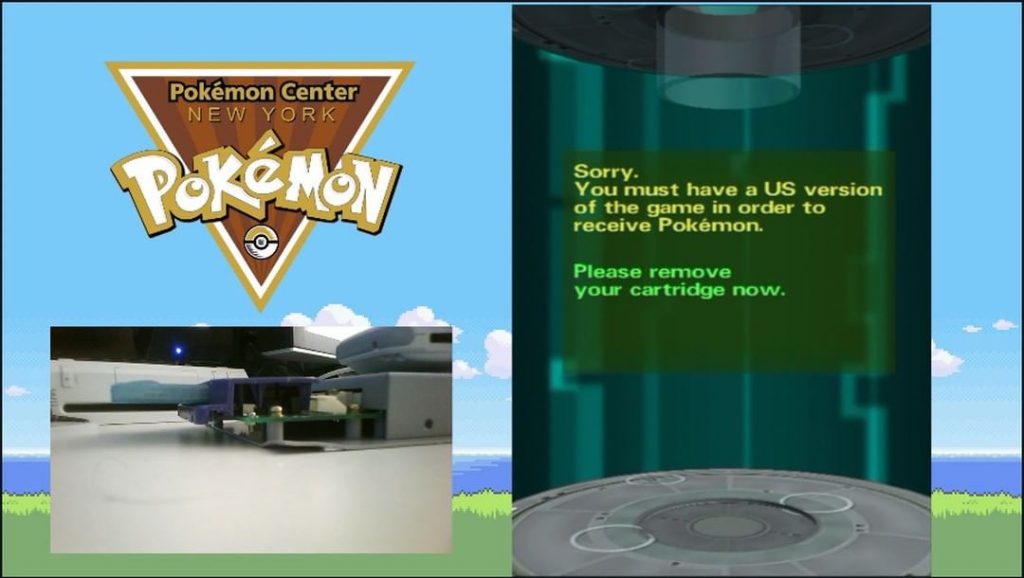
Looking for a particular section of this article? Use the buttons below to easily navigate to your destination.
“You’ve probably never seen anything like our Gotta Catch ‘Em All!™ Station! Bring your Gold, Silver, and Crystal Game Boy® Cartridges to catch the rarest Pokémon® characters at one of our four colossal portals. Look up and you’ll see the World’s Largest Action Pokéball. This state-of-the-art machine can only be found at the Pokémon Center NY!”
Introduction Message:
Hi, there! My name is Julie and I am a Pokémon distribution events archivist and researcher. My passion is archiving as much as I can about the Pokémon Center NY store and its unique digitally-distributed Pokémon. The following section was written by me, over many years, through countless hours of reading old forums, collaborating with fellow archivists on Project Pokémon, digging through code, the Wayback Machine, going to the New York Public Libraries, talking to store visitors, and even spending time with former employees of Pokémon Center NY. I have dedicated myself to uncovering the honest, most accurate truth I can about the Pokémon Center NY store and its legacy in the gaming world, through the “Gotta Catch ‘Em All!” Station. For all of those Pokémon fans, out there, who, like me, wanted to truly catch ’em all, this whole section is for you.
Thank you so much to all those individuals who have worked with me to grow this section to the best PCNY distribution archive that I can possibly write. I’d like to give a special shout-out to Pokémon gaming archivist, Gridelin, who has become a great friend to me over the years. I’d also like to thank Project Pokémon and Bulbapedia for going on this journey with me and archiving / keeping track of the Pokémon given out in the store, even when it felt nearly impossible. When I began this search for the truth behind the “Gotta Catch ‘Em All!” Station, there was virtually nothing online (or really anywhere) about it, but now, we are so fortunate to have archived, not only distribution data of the Pokémon given out in the store, but also the contents of the actual machine that was once on the second floor. Wow, guys… We’ve really come a long way.
Well, now that you’ve been caught up on how we’ve gotten here, let’s get on to the history of the Pokémon Center NY’s one-of-a-kind distribution machine!
— Julie
When the New York Pokémon Center first opened its doors in November of 2001, the Pokémon video game series was already into its second generation, having released both Pokémon Gold and Silver versions in the United States that previous year, as well as Pokémon Crystal version on July 30th, 2001, for the Gameboy Color handheld system. With this new addition to the original Pokémon video games (Red, Blue, and Yellow) came several revolutionary features to the main series. Pokémon Gold and Silver introduced a day/night cycle, the new ability to breed, differently-colored sprites that were later named “shiny” Pokemon by players, and probably the most exciting of all— one hundred new characters to catch!
Although, there was one problem: certain Pokémon were still un-obtainable within normal gameplay. Some mythical Pokémon, such as Celebi and Mew, were “event-exclusive”, meaning that a player could only receive one by either hacking their game (otherwise known as “cheating” — not cool!) or going to an in-person event. This is where a trip to the New York Pokémon Center came in handy…
On the second floor of the New York Pokémon Center, there were four large Pokémon Distribution machines, appropriately referred to as the “Gotta Catch ‘Em All! Station,” and were developed by the Japanese-based, second-party game developer company, INTELLIGENT SYSTEMS Co. Once a week, a player could come to the store and insert their game cartridge into one of the machines to receive a “special” Pokémon. Each week, different sets of Pokémon were distributed to players. The very first distribution week was for the “Legendary Beasts” and took place from November 22nd to the 29th, 2001. The Pokémon given to players was a shiny version of Raikou, Entei, or Suicune. These events followed different themes each week, sometimes matching the current season, such as the store’s “Christmas Week” in late December 2001, where the store distributed a Delibird with the move “Pay-Day” and Celebi.
One important note is that the term, “shiny” Pokémon was not coined as an official Nintendo name for Pokémon with differently-colored sprites until much later (around when generation 4 games were released in 2006-2007). Instead, original press releases from the old Pokémon Center website refer to them as “Rare” Pokémon, whereas the classically-colored Pokémon were simply referred to as “Normal”.
By March 2003, the Pokémon franchise had once again evolved, with their first generation 3 games, Pokémon Ruby and Sapphire for the Gameboy Advance system. No longer did Nintendo make such large cartridges for Pokémon games and as a result, they updated the outdated distribution machines. Pokémon Center NY closed the original “Gotta Catch ‘Em All! Station” machines on January 2nd, 2003 and re-released them with generation 3 support in September of that same year. Unfortunately, due to the store’s renovation into “Nintendo World”, there aren’t as many documented distributions for Gen III games (Pokémon Ruby, Sapphire, FireRed, LeafGreen, but NOT Emerald). Pokémon Emerald was the exception, since it was released in the United States on May 1st, 2005 and the Pokémon Center reopened as “Nintendo World” just two weeks later (May 15th), so there were no “Gotta Catch ‘Em All! Station” distribution events available for it. FireRed & LeafGreen also were not compatible with the distribution machine, but there were in-store events for it using alternative ROMs. During this gaming era, the Pokémon Center website was updated with event news far less frequently as the Gen II events prior, which has ultimately left many questions as to how many distributions actually occurred towards the end of the store’s existence. To this day, many specific details about the Gen III distribution events remain unclear as they seem to have been lost to time.
One important note is that the term, “shiny” Pokémon was not coined as an official Nintendo name for Pokémon with differently-colored sprites until much later (around when generation 4 games were released in 2006-2007). Instead, original press releases from the old Pokémon Center website refer to them as “Rare” Pokémon, whereas the classically-colored Pokémon were simply referred to as “Normal”.
By March 2003, the Pokémon franchise had once again evolved, with their first generation 3 games, Pokémon Ruby and Sapphire for the Gameboy Advance system. No longer did Nintendo make such large cartridges for Pokémon games and as a result, they updated the outdated distribution machines. Pokémon Center NY closed the original “Gotta Catch ‘Em All! Station” machines on January 2nd, 2003 and re-released them with generation 3 support in September of that same year. Unfortunately, due to the store’s renovation into “Nintendo World”, there aren’t as many documented distributions for Gen III games (Pokémon Ruby, Sapphire, FireRed, LeafGreen, but NOT Emerald). Pokémon Emerald was the exception, since it was released in the United States on May 1st, 2005 and the Pokémon Center reopened as “Nintendo World” just two weeks later (May 15th), so there were no “Gotta Catch ‘Em All! Station” distribution events available for it. During this gaming era, the Pokémon Center website was updated with event news far less frequently as the Gen II events prior, which has ultimately left many questions as to how many distributions actually occurred towards the end of the store’s existence. To this day, many specific details about the Gen III distribution events remain unclear as they seem to have been lost to time.
The event Pokémon that were distributed at the New York Pokémon Center are generally categorized into two groups by event archivists. The first group is “Generation II Event Distributions” for Pokémon Gold, Silver, and Crystal, while the second group is “Generation III Event Distributions” for Pokémon Ruby, Sapphire, FireRed, and LeafGreen (with the exception of Emerald because it wasn’t released in the United States at the time). Please note that the “Gotta Catch ’em All!” Station was NOT compatible with FireRed/LeafGreen; instead, employees had special distribution ROMs for FireRed/LeafGreen era events.
The Pokémon given out by the “Gotta Catch ‘Em All! Station” machines (both generations) were special for a few different reasons— one being that many of these event Pokémon knew battle moves that they were not able to learn through normal gameplay. In addition to giving out Pokémon with exclusive moves, the stations sometimes gifted players mythical Pokémon, like Mew or Celebi, which, in some cases, had a small chance of being shiny.
Many of the generation II distributions were of shiny Pokémon, which were highly-desired by players due to their lottery-like odds of appearing in normal gameplay. During the generation II wave of events, there was a base 12.5% chance of obtaining a shiny Pokémon from one of the “Gotta Catch ‘Em All! Station” machines, although each event was different and some had different shiny odds than others. One such event was the “Johto Legends” distribution that took place in November of 2002, where all of the shiny rates were fixed to 100%. All of the Pokémon distributed in this first group of events were given to the player in an egg, unless they were an evolved species (such as a Charizard, Venusaur, or Blastoise) or legendary/mythical (Mew, Mewtwo, Celebi, Raikou, Entei, Suicune, Lugia, Ho-oh, Moltres, Articuno, or Zapdos). We also know that, in their respective event periods, the odds of getting a Shiny Celebi was only 0.1% and Shiny Mew was 0.05%— both were extremely rare. In the case of non-egg-distributed Pokémon, their IDno.’s correlated with the distribution number (for example, Celebi’s ID no. of “01010” means that its trainer was the 1,010th person to receive an event Pokémon that day out of that specific machine). The machine would start at no.00001 and reset itself after (legend has it) no.65535, although it is still unconfirmed as to whether this “cutoff number” rumor is actually true. The OT (or “Original Trainer”) name could be either PCNYa, PCNYb, PCNYc, or PCNYd. The “PCNY” stood for “Pokémon Center New York” and the small letter represented which machine the Pokémon was obtained from (station a, b, c, or d). The small letter was recorded for staff members to recognize which station was used in the case of a machine error. It was a relatively common occurrence that the machine could accidentally corrupt save data during a Pokémon distribution, which seems to be the reason for this PCNYa/b/c/d method. Additionally, store staff members were said to have sometimes loaded data from the same letter machine OT into multiple machines at the same time when they needed to for whatever reason (as an example, two machines could both act with the same PCNYc OT, at the same time, if loaded into the distribution machine that way). The ID and OT of egg-distributed Pokémon would simply match the player’s own ID and in-game-name.
In Generation II, there was a coded limit as to how many Pokémon one could download from the machine at a time. Each visitor could only receive one Pokémon per day, per event. After a visitor stuck their cartridge into the machine, their save data was overwritten with a special line of code which would tell the “Gotta Catch ‘Em All!” Station that the user had already participated in the event. In the event that a user tried to put their cartridge back in the machine for more Pokémon, an error message would display on the monitor, as seen below. Generation III distributions were different, however. More on that later… Another difference between the Gen II and Gen III distributions was the actual layout of the monitor screens. In Gen II, the machine’s monitor had a vertical display, whereas in Gen III, the display was horizontal (this can be seen in the images below). It should also be noted that the Generation II events were much more elaborate, in terms of UI; the models from “Pokémon Stadium 2” were used and specifically animated to fit the different themes of each event. Generation III events, though, displayed sprites from “Pokémon Ruby” and “Sapphire” (as opposed to 3D models from games like “Pokémon Colosseum” or “Pokémon XD: Gale of Darkness”).
Today, we now know that Generation III distributions were a bit more complicated than those in Gen II. It appears that PCNY events in Generation III were given through the renovated “Gotta Catch ‘Em All!” Station Machines, as well as through other methods, such as an employee-controlled GBA Wireless Adapter with specific instructions for the player presented on the Station’s monitor screen. Like with Generation II events, egg-distributed Pokémon still kept the hatcher’s IDno. and OT, while non-egg-distributed Pokémon kept the style of “PCNYa/b/c/d” as their OT. In regards to software limitations, unlike with Gen II, there were no restrictions as to how many times a visitor to the store could download Pokémon to their cartridge in Generation III. In theory, one person could stand in front of the machine for hours and keep downloading Pokémon, until they either ran out of in-game box space or until an employee stopped them.
It was originally believed that the Generation II and III distribution machines weren’t region locked (eg: a player with a Japanese-language Pokémon game could also receive the event, exactly the same as a player with an English-language Pokémon game). However, recent findings suggest that this rumor was false to some extent; the code found in the machine’s software implies that it only accepted English copies of Gold/Silver/Crystal in Gen II and Ruby/Sapphire in Gen III in the store.
In regards to Gen II events, we now know for sure that only English copies of Gold/Silver/Crystal were accepted by the original “Gotta Catch ‘Em All!” Station. In fact, thanks to Gridelin from Project Pokémon, we have a screenshot of the error message that would appear on-screen if a visitor put a non-English cartridge into the machine (see image below showing what happens if Japanese Crystal is loaded into the machine). Although we do know that the actual Gen III distribution machine’s software was running on a modified early Japanese Jirachi event disc (which had support for Japanese-language settings), the store most likely didn’t have the international language settings enabled, as shown by code recently found on the machine’s software. During the store’s Gen III distribution days, it seems that the Pokémon machine only worked for English copies of Ruby/Sapphire, despite the fact that it technically supported certain international languages in the machine’s code.
Below is very special footage of the recreated “Gotta Catch ‘Em All!” Station taken by Gridelin so that all of us can see what distributions in the store were like during Generation II. The animated graphics in the video would have been what was shown on the large vertical monitor on the second floor of the Pokémon Center NY around 2001-2002.
Below is 30 minutes of uninterrupted footage that I have taken of the Pokémon Center NY “Gotta Catch ’em All!” Station’s Gen II idle animations. This is what happens when the machine is left running without anyone interacting with it. Enjoy!
Everyone, I have some very exciting news to share! Over the past 72 hours, I have had the privilege of spending 1-on-1 time with Gridelin’s recreated “Gotta Catch ’em All!” Station. After over seven and half years of researching, archiving, and documenting everything I possibly could about this distribution machine, I have finally gotten to use it myself, as it originally was. This moment has been incredible for me and I’d love to share with you all some of my findings.
- The machine is ONLY compatible with (Gen II) Gold, Silver, Crystal, and (Gen III) Ruby and Sapphire. FireRed, LeafGreen, and Emerald DO NOT WORK with the machine.
- A fun fact about the machine is that its internal code refers to it as the “Pokémon Vending Machine.” I thought that was pretty cool.
- You can control the output either by using a GameCube controller OR with a GBA/GBA SP connected to the machine.
- Regarding Gen II events, the Pokémon that float around the screen while the machine is idle are RANDOM. They’re not predetermined by the event data. They consist of Gen I and Gen II Pokémon.
- Regarding the Gen III events, the Pokémon displayed on the screen of the distribution monitor is not necessarily the Pokémon that is given through the distribution. For example, during one of my many tests, I loaded the “Evolution Stone” event, which consisted of Pikachu (holding a Thunderstone), Staryu (holding a Waterstone), and Gloom (holding either a Leafstone or Sunstone). When I booted up the machine, it displayed Pikachu as the Pokémon being distributed each time the machine was used. HOWEVER— when I subsequently checked my party, I had Staryu and Gloom as well. This was not the case with Gen II events, as they had special animations for each Pokémon.
- Shiny Mew was VERY hard to get, full-odds, but I managed to do it!
- When using the machine in Gen II, there’s a 7-day limit for use, but if you want to, you may change the system clock to match a different event, redeem that event, and then switch back to receive another Pokémon.
- Gen III distributions have no limit other than the amount of space that PC boxes have.
- Both Gen II & III events distribute the Pokémon to the party, so at least 1 space is needed to redeem a Pokémon.
- You do NOT have to be saved at a Pokémon Center for the machine to work.
I have multiple hours of recordings from when I tested the machine that I plan to post soon, so please look out for them on my social media platforms. Thank you all so much for following me on this archival journey. It means the world to me that so many of you out there care so much about preserving video game history, like I do. I feel incredibly emotional that I’ve finally achieved my dream of playing with the “Gotta Catch ’em All!” Station. Back when I first started this journey, many doubted that I —a female gamer from New York City— could actually recover the machine one day. I was laughed at and ignored, time and time again, but there were some wonderful individuals who stuck by me through it all— and to them, I am forever grateful.
Thank you all. Especially, though: thank you, Gridelin, Sabresite, and Project Pokémon for all you’ve done to revive something so special to all of us.
— Julie
UPDATE – 2/15/2023:
Today, I would like to take a moment to talk about something super important to me. It has become a major issue that growing Pokémon-content creators are taking the work of researchers, such as myself, and not giving us credit for what we’ve done. Let me be clear: this is not okay and no one should stand for it. It is the responsibility of PokéTubers and other kinds of content creators to properly fact-check their content and credit those who have helped them along the way. Please, set a good example.
Recently, as this website has gained recognition online (as I always hoped it would), several content creators and blogs have failed to credit me for my archival work, writing, and maintenance of this Pokémon Center NY Historical Website. Some places have gone so far as to even give credit to my co-author, Grace, for words I’ve written on this website and research I’ve done about the “Gotta Catch ‘Em All!” Station. It hasn’t sat well with me at all. Actually, to be honest, it’s super frustrating. What’s even worse is that very few of these specific creators have even attempted to correct their mistakes, even when asked to do so.
So, in an effort to be transparent with you all, which is something I always do in regard to this website, I want to clarify some things. I have been running this website, on my own, for three years, as of this month. Grace, although always a lover of all things PCNY, has shifted most of her focus to other kinds of archival projects over the past few years (which is totally awesome and I support her 100% with her new research!). Today, I am the one who physically updates this website with new photos, videos, content, etc. I spend lots of time in between posts like this one, researching and scouring the internet for any new information on this very old store. This project is still very-much-alive for me. I’m still doing all I can to make this website as accurate and as up-to-date as I possibly can.
Thanks for reading. I’ll leave you all with this: just because they have a high follower count, doesn’t mean that they’ve done all of the work— or that they’re always right.
— Julie
UPDATE – 10/13/2022:
So, after months of analysis, I’ve come to the conclusion that the save file that I mentioned in my last update is, unfortunately, not authentic. It’s a shame, but, honestly, I’m happy to have been able to come to a thoughtful conclusion rather than post something I wasn’t completely sure of. When I first was notified about this save file, I was really skeptical, even though some others in the community were very certain of the file’s authenticity. I’m glad I did my due diligence, though. It’s always better to be safe than sorry, especially when you’re researching lost media on the internet.
— Julie
UPDATE – 5/30/2022:
Hello again! It’s certainly been a while (WOW— over a year?!)! I’m sorry that I’ve been absent for so long. A lot of personal things have happened this year and I had to step away for a bit to deal with, well, my life!
Anyway…
I’m currently in the process of analyzing a save file that was brought to my attention this morning, containing, what the uploader claims to be, Gen II Pokémon, some of which, we PCNY archivists haven’t actually seen before. To be honest, I’m not completely sure if the Pokémon on this save file are authentic yet, but I wanted to mention this whole situation anyway because this discovery could be a big deal if it is real. I’m hoping for the best, but we’ll see. I’m not planning to post anything else about this file until I feel more confident that it’s 100% authentic because I don’t want to confuse anyone by giving it false legitimacy. If you need me, I’ll be researching away on my computer…
— Julie
UPDATE – 3/26/2021:
Hey, everyone! Since my last update, SO much has been found. First, in our “Gallery” section, I have added some home videos sent to us by a very kind person, named Katie, who visited the Pokémon Center NY store in April 2002 and again, in November 2003. These found videos are the first, ever, to show the distribution machine working in the store. If you want to see my two-part TikTok analysis videos of the newly-found footage of the “Gotta Catch ‘Em All!” Station, they can be found here and here. As for another piece of history, Gridelin just sent me even more footage of the recreated “Gotta Catch ‘Em All!” Station distributing more Pokémon— this time, with even more unique animations! He also managed to recreate a high-quality version of the original Pokémon Center NY television commercial. See both of those super-awesome YouTube videos below, and, as always, if you have any footage of your own, please send it to me ASAP so I may upload it to this website, crediting you.
Thank you all so much for contributing so much to this archive! I am so happy with how much progress (and history!) was made this week~
— Julie
UPDATE – 6/9/2020:
Hello again~
Once again, Gridelin from Project Pokémon recently uploaded new test footage. This time, we have a video displaying the various PCNY distributions which have special animations! At the moment, we are still trying to figure out why certain Pokémon have animations and others don’t. One theory that I have is that those Pokémon with animations were direct references to the then-recent Pokémon films and anime, in general. For example, if you watch the video below, Entei’s animation has purple-ish flames that resemble those that appeared alongside the Unown in the third Pokémon animated film (which was also released around the same time, may I add). Other examples are how Mew has its pink bubble-orb from the first film and Suicune has water ripples under its feet, likely a reference from when it purified the lake for Celebi in the fourth film.
What other film references can you all find? — Julie
UPDATE – 5/8/2020:
Hey, guys!
Hope everyone reading this is safe and healthy. I’m currently stuck far away from my home in NYC because of COVID-19, but I will continue to work on the site as planned, even if I’m without many of my tech tools.
First of all, I just edited this section to reflect some new information about the distribution machine that I’ve collected recently (and to clarify some very outdated/confusing text from several years back). Since I started writing this page over two years ago now, much more has been discovered about the “Gotta Catch ’em All!” Station and I don’t want anything on here to remain inaccurate if it has since been proven otherwise. Sorry if I ever misled anyone here with now-debunked info. I’m trying my best to fix and further-verify what’s currently on here as it seems that our little website has grown quite popular as a source for Pokémon Center NY information in recent weeks. Second, I eventually plan to add more information to our website about “Pokémon Box: Ruby & Sapphire” and the “Pokémon Mini”, so please check back for that!
As a final note, Gridelin from Project Pokémon recently uploaded test footage of a “Negaiboshi Jirachi” distribution from Japanese internal data that was left behind on the Pokémon Center NY’s distribution machine’s software. I’m linking it below for anyone who’s interested! — Julie
UPDATE – 3/7/2020:
This morning, the latest Hard4Games PCNY video was released! In it, Tony, Retr0Ali, and Gridelin from Project Pokémon gave all of us new insight into some of the more “techy” aspects of the “Gotta Catch ‘Em All!” Station. We now know some of the specific numbers for the distribution rates through data-mining, the machine’s hardware functionality, and fascinating information about the actual distro-disc itself. As just one example, we now know that the “distribution machine” software was actually put on a specially-made Japanese GameCube disc! This custom disc had a line of code that one could manually edit to change the machine’s language from English (which was used in the store) to Japanese! This may explain that old rumor that Japanese visitors to the store were able to obtain Gen III events on their region’s cartridges all those years ago— as it turns out, the machine actually supported their cartridges’ language! Really awesome stuff! Also, I linked a Q&A I did with Hard4Games & Retr0Ali about our collective work on this project. Feel free to watch that as well!
— Julie
UPDATE – 1/11/2020:
Hi, guys!
Today, we have something very special to share with you all! YouTuber, Hard4Games, has partnered with Retr0Ali, several incredible users from Project Pokémon, Grace, and I to release the very first historical video (possibly ever!) about the original “Gotta Catch ’em All!” Stations at PCNY. This project took an unbelievable amount of work from everyone involved and we’re all so proud to be sharing our findings with the public at long last. The video just came out on the “Hard4Games” YouTube channel this morning, so please take a look and let us know what you think! — Julie
UPDATE – 12/17/2019:
Hello, everyone! Brand new information has recently come out about the original “Gotta Catch ‘Em All!” Stations and will be revealed in the upcoming new year. If this piece of PCNY history interests you, please check back here often, as I will be updating this portion of the site with more accurate and detailed information as to how the machines once worked and on what platform. Although, this website will not be sharing any files or specific instructions on how to obtain the original Pokémon of either generation, we will be linking a video from YouTuber, Hard4Games, who has partnered with Retr0Ali and several incredible users from Project Pokémon to re-create the distribution events. Grace and I have contributed our PCNY Historical knowledge to an upcoming video of theirs, so stay tuned… We’re all very excited to see how this turns out! — Julie



